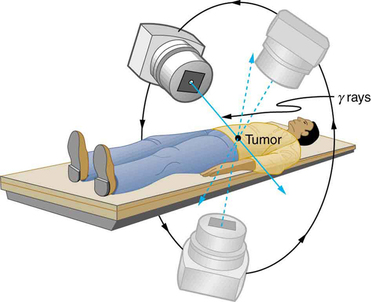Gamma rays, the most energetic form of electromagnetic radiation, are enigmatic messengers from the cosmos, heralding the presence of powerful astronomical phenomena. This discussion, however, will not plunge into the dizzying array of astrophysical occurrences from which these photons emanate; rather, we shall embark on a thought experiment surrounding the notion of generating gamma rays in a home setting. With a caveat: the creation of gamma rays involves advanced equipment and intensive safety protocols that are not typically feasible or advisable for residential contexts. Hence, this discourse aims to illuminate the fundamental science behind gamma ray production, serving as a metaphorical journey into the heart of physics and its manipulation, rather than a practical, actionable guide for amateur experimenters.
To understand how one might conceptually generate gamma rays, we must first explore the nature of these elusive particles. Unlike their lower-energy counterparts—microwaves, infrared, and even ultraviolet rays—gamma rays are not merely manifestations of mundane phenomena. They possess immense energy, potent enough to ionize atoms and penetrate living tissue. This inherent ferocity is akin to the most vivid flash of lightning, emanating not from a mundane storm but from the cataclysmic explosion of a star at the end of its life. Such remarkable energy poses an indomitable challenge, demanding not just arcane knowledge, but also an arsenal of specialized apparatus.
The metaphorical toolkit for gamma ray production in sophisticated laboratories includes particle accelerators, nuclear reactors, and isotopic sources—far removed from the confines of home experimentation. In these settings, electrons are accelerated to near-light speeds, crashing into various target materials. This collision generates high-energy photons in the gamma ray spectrum, akin to creating a tempest in a teapot through sheer velocity and force. These controlled environments ensure precise measurements and observations, all under vigilant scientific scrutiny.
One potential household analogy lies in the concept of radioactive decay. While it is entirely prohibited and ethically irresponsible to experiment with radioactive materials at home, the theoretical principles can illuminate our understanding of gamma radiation. When unstable nuclei relinquish their energy, they may emit gamma rays—a process resembling the slow, yet inevitable, decay of autumn leaves, each falling leaf a representation of nuclear instability. In this scenario, sources such as cobalt-60 or cesium-137 serve as potent reminders of our universe’s chaotic nature. Upon decay, these elements liberate bursts of gamma radiation—nature’s fiery breath—offering a glimpse into the cataclysmic processes at play on a cosmic scale.
Consider the household analogy of fluorescence. While this too lacks the high-energy drama of gamma ray production, it invokes a tantalizing relationship to the electromagnetic spectrum. Fluorescent materials absorb lower-energy radiation and re-radiate it as visible light—a dance of energy transition. If we extend this metaphor, we can imagine a fantastical scenario where one might harness similar properties to create “miniature gamma bursts.” Yet, this remains firmly within the realm of fantasy, as such processes require manipulations at atomic scales that cannot be replicated without sophisticated technology—and importantly, without risking safety.
In truth, understanding gamma rays compels us to confront a sobering reality. Their deployment, whether in medical imaging, cancer treatment, or astrophysical research, is tightly regulated, underscoring the profound significance and potential perils associated with their use. Gamma rays are wielders of both healing and destruction, an archetype of the duality present in many scientific endeavors. Thus, while discussing their production at home provides intellectual intrigue, it also serves as a reminder of the ethical responsibilities that accompany knowledge and technology.
For the uninitiated, the notion of generating gamma rays may seem laced with an alluring mystique. A fleeting venture into these obscured realms of physics portrays them as magical, invoking elements of alchemy, where the ordinary is transformed into the extraordinary. Yet, this fascination must be tempered with an understanding of the potential consequences that stem from manipulation at such high energies. The brevity of human ingenuity does not extend to the reckless pursuit of immediate gratification without consideration for the repercussions.
To distill the essence of gamma ray creation, one must adhere to principles governing radiation safety, controlled environments, and ethical research practices. The quantum world operates on a fundamentally different set of rules, wherein energy fields warp our understanding of reality. Trying to summon gamma rays in a domestic sphere reflects a misunderstanding of the delicate balance needed when handling such volatile forces. It is better to revere gamma rays as a critical element of the vast electromagnetic spectrum, an elusive reminder of our universe’s breadth, rather than engage futilely in attempts to summon them from the ether.
In conclusion, the idea of generating gamma rays at home serves more as a metaphor for the intersection between everyday curiosity and the profound complexity of physical laws than a practical ambition. This exploration into the impossible is an invitation to appreciate the universe’s intrinsic wonders without attempting to harness their raw power. Instead, we should advocate for responsible scientific inquiry and a robust ethical framework that keeps the pursuit of knowledge anchored in safety and responsibility. In the grand symphony of existence, gamma rays may remain a distant crescendo, ever out of reach, yet eternally captivating in their splendor.












